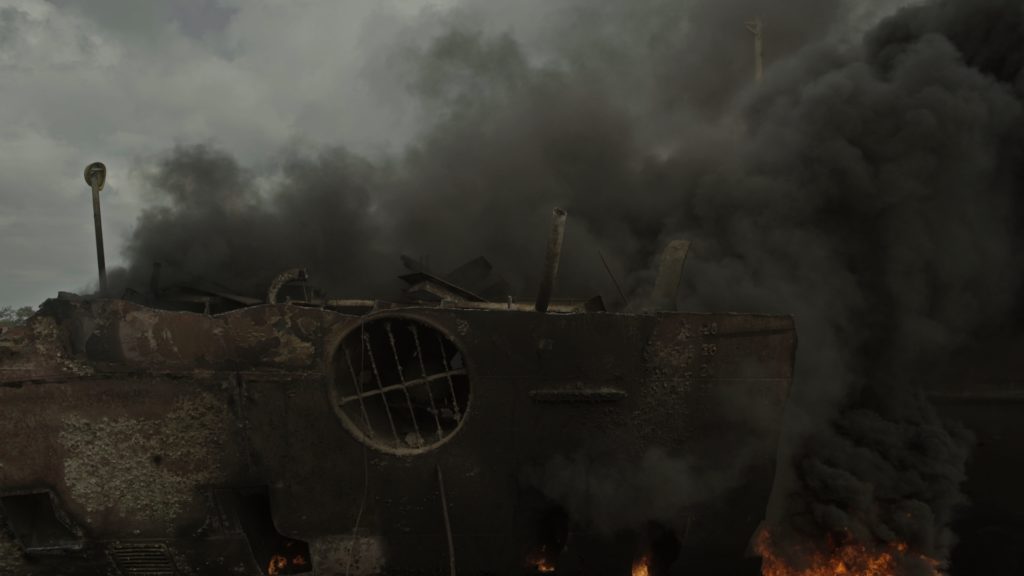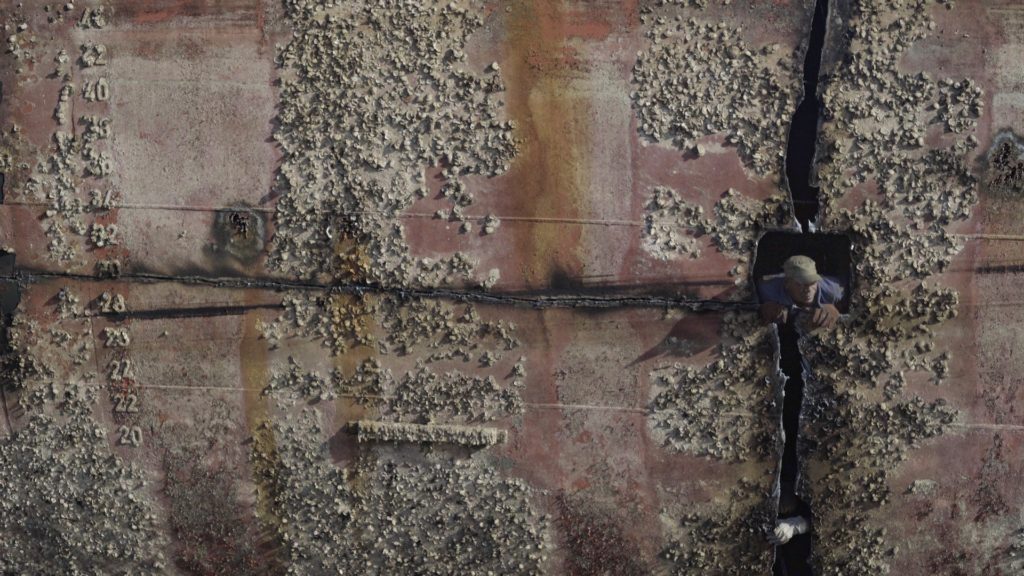The name of an event: “Cuban independent cinema”.

by Ángel Pérez
1
The term “Cuban independent cinema” is one of the most problematic among those that circulate in the island’s contemporary cultural landscape. A quick review of the materials that in recent years have been busy mapping the aesthetic, political, civic balance of filmmakers and films that participate in “the independent” -I’m thinking, at least, of the works of Dean Luis Reyes, Juan Antonio Garcia Borrero, Antonio Enrique Gonzalez Rojas, Carlos Lloga Sanz, Joel del Rio, also in the pages of the Cine Cubano magazine… -, not only reveals a conceptual indeterminacy in the use of that category, but also an analytical need to widen its taxonomic scope in the face of the danger of being victims of reductionism.
Graduates of the International Film and Television School of San Antonio de Los Baños (EICTV) and the Faculty of Audiovisual Media Arts (FAMCA), or with self-taught training, a group of filmmakers with dissimilar stances towards institutionality and political power have burst into the Cuban audiovisual field, at least in the last three decades. These creators, responsible for the current configuration of the audiovisual field, have atomized production channels, aesthetic imaginaries and film consumption strategies. The seriousness of the “Cuban independent cinema” phenomenon -modeled by the particular historical-political circumstances of the country- motivates conflicting criteria when it comes to specifying what (and whom) this qualifier indexes.
It was with the emergence of “American independent cinema”, towards the end of the 1950s, that the term “independent” became universal in the realms of film historiography. At that time it registered the emergence of a group of filmmakers who, outside the big commercial circuits of Hollywood production, proposed a (low-budget) cinema that hierarchized styles and themes displaced by the mainstream, themes that show the less pleasant profiles of the society of the moment; thus settling a definitive blow to the complacent narrative standardized by the big industry. This generational event set the tone for a series of aesthetic codes and intellectual attitudes that -without knowing a rigid break- have been used in the future to explain the organization of the cinematographic field (and the projections of its different actors) in the most varied cultural geographies. In Cuba, the term “independent” has behaved as an agreed-upon signifier to qualify several profiles and events that are part of the structure of the current national film scene.
In any case, “independent cinema” is an operative convention that, in the terrain of forces and tensions intrinsic to the Cuban audiovisual panorama -even beyond the physical limits of the Island-, points to a series of propositions, not defined from a single perspective of analysis. As used in practice, this label delimits: 1) the emergence of new generations of filmmakers who do not establish a unidirectional link with the ICAIC, as the country’s main film production center; 2) the emergence of a diversity of forms of creation and methods of audiovisual production unheard of among us; 3) the demarcation of an epochal rupture marked by the appearance of aesthetic programs that, by introducing stylistic coordinates that were not or hardly explored in Cuba, break with the uniformity of creations coming from the ICAIC; 4) the advent of a vision of the world (and of the revolutionary project) divergent from the one that had motivated the creation of the inaugural generations of the Institute; 5) and, fundamentally, the configuration of a new cultural period, another order in the dynamics of the cinematographic, which now articulates a set of voices in which aesthetic, political, ideological reasons converge… aimed at transforming the traditional structure of the Cuban audiovisual field, as it had been regulated by the ICAIC from the moment of its foundation.
2
Between the 1990s and so far in the 21st century, a series of historical, political, technological and economic factors have conditioned a radical transformation of the country’s cultural and specifically cinematographic scene. The fall of the Berlin Wall, the end of real socialism, the country’s entry into the so-called Special Period…, to name a few examples, were a serious blow to the national project defended by the Revolution. The 1990s were a time of reformulations, marked by a massive exodus of Cubans, the emergence of dissimilar economic survival strategies, and a growing precariousness of material life… These factors shook people’s imaginary and subjectivity in an irrevocable way, as well as the very nature of artistic production. The aesthetic resonances of the Special Period transformed cinema into passages of the imaginary of an individual gripped by his everyday life.
Several times I have insisted that “by the 1970s there were already young people interested in making a different kind of cinema, parallel to that of the ICAIC. Even earlier, if we remember that the members of the magazine Lunes de Revolución even founded a production company, of which we currently remember, at least, works such as PM or Habla un campesino, films that bet on an aesthetic modernity distant, to a certain extent, from the aesthetic paradigms privileged by the ICAIC. (It is probable that the real genesis of the polemics around PM is located in the intellectual antagonism existing between these two groups of creators, which is well before the revolutionary triumph). Now, I was saying that, in 1971, for example, a First Underground Film Festival was held as an initiative of a group of film buffs including Tomás Piard, who has said referring to those years: “ICAIC was never a paradigm for us […] The themes of the films […] seemed to us forced by political and ideological circumstances”. Nevertheless, such initiatives failed to bequeath notable works. The other pattern of interest in the formation of an independent movement would not appear until the 1980s, especially when, towards the end of the period, in 1987, Piard himself, with Jorge Luis Sánchez, started the AHS Film Workshop. Although not even Ecos had a qualitative impact, here it is possible to glimpse a decentralization of film production that would later favor the aesthetic course of Cuban cinema. Voices outside the ICAIC will come to be heard with resonance after the appearance, in the early 1990s, of authors like Jorge Molina – Molina’s Guilt (1992) -, Enrique Alvarez -Sed (1991) – or Juan Carlos Cremata -Dark Caged Rhinoceroses (very fashionable) (1990) -, when the incorporation of these films to the cultural field of the country considerably tightened the cinematographic experience”.
It was in the transition from the 90s to the 2000s that -given that the epochal conditions made it possible- the irruption of a large number of audiovisual creators outlined, in a more or less coherent map, the coordinates of independent cinema in Cuba. The strongest signs of the promotion of creators that make up a (possible) genealogy of that independent cinema can be found in films such as Sed (1991) or Molina’s culpa (1992), to give a couple of examples, where the first productions of Juan Carlos Cremata, Jorge Luis Sánchez or Arturo Sotto would also enter. Madagascar (Fernando Pérez, 1993) is much talked about as the film that best explains the impact that that moment had on the Cuban sensibility. Certainly, in the conflict between Laurita and her mother, the schism that would ensue between individuals for whom the failure of the Revolution as a promise of a better world constituted a personal failure, and those younger ones who -without having lived the splendor and triumphalism of the first revolutionary decades- found themselves dislocated in a reality with no expectations for the future. However, in Thirst, the anguish of Laurita’s character in Madagascar is present -I would even say enhanced-, but Álvarez places his characters in the middle of a railway station where the marks or stereotypes of the Cuban space are completely obliterated. Thirst’s young couple moves through the space in a physical relationship that reveals – even before their dialogue – the profound existential crisis they are experiencing. The escape from their immediate reality is an attempt to find the roots of their identity.
Sed and Molina’s culpa will be the type of cinematographic text that will begin to configure the formal register and the discursive agent that will become dominant in what critics recognize as “Cuban independent cinema”. These two films, in the first instance, reveal a complexity of dramaturgy that ICAIC productions had abandoned a long time ago, given to a sociological realism that did not favor the linguistic inventiveness of cinema. (It is necessary to point out that, although Jorge Molina graduated from the EICTV, Kiki Álvarez came from studying Art History at the University of Havana, and the AHS was responsible for the production of his film). Here we find visual, narrative and mise-en-scene explorations that point to avant-garde creative searches. The respective physiognomies of the films of this group of creators -Jorge Molina and Kiki Alvarez are just a couple of examples- yield a relevant aesthetic enrichment, but, above all, they insert in the coordinates of Cuban cinema a different discursive agent. I wrote before that, if Madagascar still “showed what critics have described as disenchantment in the face of the promise of a better world, Molina’s culpa objectified in action an indifferent distancing. With the signifier saturated, pressured by the historical becoming, Molina`s guilt becomes a mere mediator, one more instant in the attempts of the subject to find his place in the world, to explain his impossibility of being free”.
Video de familia (Humberto Padrón, 2001) is a paradigmatic film to understand the turn introduced by these “independent” filmmakers, to the extent that it argues from its own textuality the epochal changes that conditioned the new directions of creation. This film, thanks to the resonance it had in the intellectual scene of the time, certified a change of aesthetic model in Cuban cinema, it showed that the concept of cinema was facing radical modifications (the latter brought with it the extended use of the term “audiovisual”, a less rigid one, which embraces the multiple textual practices in which the moving image is presented, which were already being tested by those same independent filmmakers -many of them moved from specifically cinematographic material, to video art or music clips-). With his film, Humberto Padrón underscored the aesthetic and discursive possibilities of video and digital formats, and informed the advent of a different epochal thinking. But even more, Video de familia completely dispenses with the disenchantment that characterized the creations of the 1990s. Placed at the center of the enunciation, the character played by Herón Vega condenses the ethical and existential sign of the generation that emerges with the 21st century. The confrontation of this character with his father reveals -over the problems related to the homosexuality of the emigrated brother-, the assumption of a worldview in which the conquests of the Revolution and its project of the new man were banished.
Elsewhere I have commented, more extensively, how in order to understand “the radical nature of the transformation that is taking place in the world of the so-called “independent filmmakers”, it is necessary to remember that the discourse of the Revolution was sustained, to a large extent, in the development of a strict nationalism that was structured through exclusions that are now typical features of the Cuba of the 21st century: a Cuba marked by the logic and dynamics of cultural globalization. The gradual incorporation of the country into the logics of globalization happens at the same time that the state ideological discourse begins to be displaced as the center of the daily life of individuals. When reviewing singular texts such as Memorias del desarrollo (Miguel Coyula), The illusion (Susana Barriga) or El proyecto (Alejandro Alonso), a rearrangement of the ideological orderings that once marked the country’s reality becomes evident. But what is most important here is the delimitation of a framework of identification for the subject that structures the discourse. In other words, the hegemony of the nationalist discourse defended by officialdom begins to languish, thus dynamiting the signs from which the country was thought, looked at, represented, as an imagined community”.
It will certainly not be until the appearance of this generation that begins to produce with the new millennium that “independent cinema” in Cuba will take on a more or less coherent physiognomy.
new millennium that “independent cinema” in Cuba will take on a more or less coherent physiognomy. Of course, this generation will enter into permanent conflicts with the ICAIC, given its ineffectiveness – itself responsible for its petrification – to accept or fully understand this multiplicity of new aesthetics and discourses. By the beginning of the 2000s, the structuring of the cinematographic field evidences a favorable diversification that will widen up to the present, where the increase of online connectivity and the greater opening of the country to the foreign market facilitate a certain freedom of management to creators. The emergence of new production channels and exhibition spaces has been conditioned by the decisive development of digital technology, which de facto democratized creation, negating the rigid centralized scheme still defended by the ICAIC.
When the First National Youth Audiovisual Exhibition was held in Havana in the year 2000 -which would later become the ICAIC Youth Exhibition-, the state institution was yielding to a truth that was overwhelmingly imposed on them; it recognized the irreducible presence of these creators in our cultural sphere. Even though Cuba suffers from an excessive state centralization that controls almost the entire insular life, the Muestra Joven, more than opening the doors of the institution for these filmmakers, became a platform from which it was possible to think, structure, make visible, amplify the work of these filmmakers, as well as renegotiate their relations with the historical archive. Over the direct incidence of the field of political power in the cinema’s own space -there are many cases of censorship experienced by some creators due to ideological disagreements (recent films censored: Santa y Andrés (Carlos Lechuga), Quiero hacer una película (Yimit Ramírez), Sueños al pairo (Fernando Fragela; José Luis Aparicio), this event welcomed the most significant film production and bet on contributing to enrich the plots of the insular cinematographic landscape.
The times when the ICAIC existed as an expression of a group organization in which each filmmaker enjoyed his or her individuality were long gone, so the Festival was a first attempt to assimilate this other film production that did not come from the organization, but that set the pace of creation in the country. From now on, on several occasions the Institute’s production plans have incorporated these filmmakers -Tres veces dos, La edad de la peseta (Pavel Giroud), Largas distancias (Esteban Insausti), La piscina (Carlos Quintela)…-, without sacrificing their vision of cinema and the world; in such cases, the ICAIC has constituted one more production possibility and not an instance of authorial or ideological recognition.
I insist once again on the fact that the emergence of independent production companies in Cuba -Estudio
ST, Wajiro Films, Producciones de la 5ta Avenida, La tiñosa autista, La casita del lobo,
Cooperativa producciones, Espiral Servicios Audiovisuales, Pirámide, Remachestudio, Trapichestudio, DB Estudio… – has meant much more than the simple projection of a seal of independence from the state institution. It is the practical proof of the emergence of a field of activities that has contributed to transform the socio-cultural reality of the country, by demonstrating the organizational capacity of civil society in the national public sphere. The “independent cinema” is no longer -at all- a marginal or submerged cinema: not only because the films are programmed in spaces such as the Muestra Joven or the International Festival of New Latin American Cinema, not even because of the success they have achieved in prestigious international festivals, but because they constitute the most resolute expression of the future of Cuban audiovisual creation. Even the productions of the Diaspora have a more and more definitive presence in the island’s film panorama. It is enough to mention the resonance of Los lobos del Este (Carlos Quintela) and A media voz (Heidi Hassan; Patricia Pérez), films that widen, among us, not the denomination “independent cinema”, but the very notion of “Cuban cinema”.
3
The cinematographic landscape of contemporary Cuba hosts discussions and confrontations not only of an esthetic nature, but also of an ethical, political, identity-based nature… Its structure is that of a network in which an axiological field of dissimilar profiles is woven. Pierre Bourdieu explains it precisely when he elaborates his notion of “artistic field”, for rather than a social milieu in which it is possible to locate filmmakers, writers or diverse institutions, he speaks of “a field of forces that act on all those who enter that space and in different ways according to the position they occupy in it […], as well as a field of struggles that seek to transform that field of forces”.
In this framework, artistic creation is a discursive agent in which contradictions, positionings and determinations are concretized, emerge and materialize, circulating in the network of objective relations that undermine the cinematographic panorama, as far as I am concerned now. Films occupy or define positions within a machinery of power that inevitably administers them; and power must be understood as “the distribution or placement of discourses that manage the ordering of culture and that are concretized in laws, state organizations and social hegemonies”. In this sense, to continue with Foucault, Cuban independent cinema constitutes, by its very nature, “a multiplicity of points of resistance”; the expressions of such resistances “cannot exist except in the strategic field of power relations”, but “it does not mean that they are their counterpart”, but “they constitute the other term in power relations; in them they are inscribed as the irreducible confronting element”.
What is it possible to detect in the accumulation of films that are part of the convention of “Cuban independent cinema”? Just the renunciation/resistance to a program of aesthetic thought that has always been under the surveillance of the State’s truth. In the 1960s, the impact of the Revolution on Cuba shaped the gaze of filmmakers. Even when many of the founders of ICAIC had to face the direct intervention of the political power in their domains, their conviction to revolutionarily change the national reality governed their creative praxis. Only from that perspective can we explain the nonconformist poetics of Sara Gómez, Nicolás Guillén Landrián, Julio García Espinosa, Tomás Gutiérrez Alea. Wasn’t Titón in Una pelea cubana contra los demonios warning of the dangers and consequences of dogmatism? Didn’t Julio García Espinosa wonder in La inútil muerte de mi socio Manolo about the violent reverse side of revolutionary conquests?
The difference between the nature of these questions and those posed by today’s “independent” filmmakers lies in the conviction they had of the Revolution as historical truth. The Revolution was the locus from which their discourse germinated. Quite different is the relationship that contemporary filmmakers seem to establish with the Revolution, which explains their continuous confrontation -many times tacit, others expressed at the institutional or civic level- with the public intervention agencies created by the revolutionary apparatus. That conception of art as a substitute for an extrinsic truth that controls it, so defended by the film creators of the historical ICAIC, continues to be applied to “the independents”, for whom art is an instrument in search of an intrinsic truth.
The aesthetic scheme that conceptualized cinema during the first years of the founding of the ICAIC is opposed to the one that explains the cinema made by “the independents”, even when the latter participate in the state apparatus or are produced by the government. These differences are appreciable at the level of the artistic work itself: the coherent and immediate reception that had among Titón, Julio, Santiago, Nicolasito, Sara… the Brechtian distancing as dramaturgical structuring, responds to the subordination of cinema to a truth external to it: the Revolution. The distancing was a mechanism that allowed the spectator to be estranged from fiction in order to place him in front of the truth of the world. When approaching reality, the “independent” filmmakers that are beginning to appear with the irruption of the 21st century, operate with an idea of cinema as an incarnation of their own truth. Their problematizing relationship with history as an archive that they continually rearrange has much to do with the impossibility of finding a truth if not in the images that make up their films. All these “independent” films -Memorias del desarrollo (Miguel Coyula), Molina’s Ferozz (Jorge Molina), Juan de los Muertos (Alejandro Brugués), Santa y Andrés, La obra del siglo (Carlos Quintela), El hijo del sueño (Alejandro Alonso), El secadero (José Luis Aparicio), Tierra roja (Heidi Hassan), El pescador (Ana Alpizar), Amantes (Alan González)? – are the transference of an imaginary that, in turn, introduces a radical cut in the Cuban reality.
The independence of cinema in Cuba has consisted much less in the conquest of economic autonomy than in the search for autonomy in the cultural discourse deployed by the film. The semantic activity formalized by “the independent”, begins to be defined then by the epochal will to confront, from the discourse orchestrated by the films, the ideological plot favored by the voices of officialdom, in their condition of institutional representatives of the Revolution. This independent cinema is a scenario of transgressions to the social ordinances emanating from the State, and to the aesthetic field of cinema in Cuba. From the political point of view, it produces a double articulation. On the one hand, the films -regardless of the degree of more or less direct relationship they maintain with a production instance belonging to the State- are scenarios crossed by antagonisms emanating from the different representations of reality from which they operate; in them, struggles of resistance to the imposition of any creed are conjugated. On the other hand, filmmakers embody a battle of interests as a civic group for the possibility of freely participating in the public space.

4
Independent” creators have the civil responsibility to influence the “web of social authorities” (as Edward Said calls it), in order to generate recognition of their diverse interests. The challenge is to reject the mechanisms that undermine their autonomy. When they explore in their films historical passages not exactly celebrated by officialdom, they already assume a rebellious posture that inaugurates spaces of socialization where they pronounce (and configure) a voice of their own. In this creative environment there are marked aesthetic differences -just review the films of Jorge Molina, Carlos Lechuga, Rafael Ramirez, Miguel Coyula, Carlos Quintela, Marta Maria Borras, Emmanuel Martin…-; there are even differences in the thought that these films project. Nevertheless, they all coincide in the position they occupy within the cinematographic field, in the relations between institutions, State and social actors. As a community, this cinema, operationally labeled as independent, is a mobilization that has already broken the supports of hegemony, insofar as the films are a reality that atomizes the sterile zones of the instituted culture.






